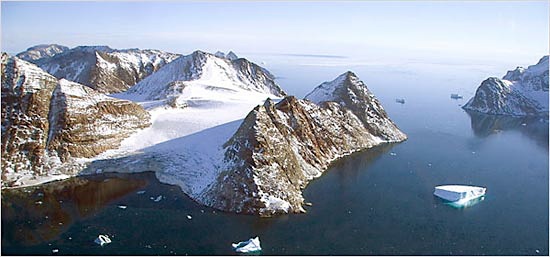Glaciers’ retreat in Greenland keeps mapmakers busy
All over Greenland and the Arctic, rising
temperatures are not simply melting ice; they are changing the very geography of
coastlines.

This chain of islands used to be a “peninsula”
All over Greenland and the Arctic, rising temperatures are not simply melting ice; they are changing the very geography of coastlines. Nunataks — “lonely mountains” in Inuit — that were encased in the margins of Greenland’s ice sheet are being freed of their age-old bonds, exposing a new chain of islands and a new opportunity for Arctic explorers to write their names on the landscape.
The abrupt acceleration of melting in Greenland has taken climate scientists by surprise. Tidewater glaciers, which discharge ice into the oceans as they break up in the process called calving, have doubled and tripled in speed all over Greenland. Ice shelves are breaking up, and summertime “glacial earthquakes” have been detected within the ice sheet.
“The general thinking until very recently was that ice sheets don’t react very quickly to climate,” said Martin Truffer, a glaciologist at the University of Alaska at Fairbanks. “But that thinking is changing right now, because we’re seeing things that people have thought are impossible.”
Glaciologists, ice geologists, institutes studying such phenomena will continue to record and analyze data — even when it confounds those who think science should fit into tidy unchanging boxes.
Ennui is always more comfortable than inquiry.
Posted: Wed - January 17, 2007 at 07:32 AM